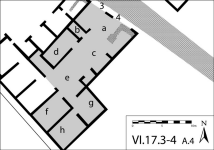


Figure 18: Bar at I.2.7-8, Pompeii (Type A.2).
Figure 19: Bar at VI.17.2, Pompeii.
Figure 20: Bar at VI.17.3-4, Pompeii.
Most of the Type A properties had two rooms in total; 26 examples are known. The provision of a second room was also the most usual arrangement for all types of bars (46 of the 158 bars, or 29%), and is a phenomenon equally recognisable across the various studies of retail and commercial shops of the Roman world. The average floor area for Type A.2 bars was 44m², with the smallest registering 25m² at II.1.6, while the largest, at IX.3.10-12, was 78m².



Figure 18: Bar at I.2.7-8, Pompeii (Type A.2).
Figure 19: Bar at VI.17.2, Pompeii.
Figure 20: Bar at VI.17.3-4, Pompeii.
While only three of the 14 Type A.1 bars retained access to a non-domestic building, half (13 of 26) of the Type A.2 bars had access to a small, seemingly non-domestic, property via an internal doorway such as at I.2.7-8 (see Figure 18), or to much larger complexes as at I.1.9 and VI.17.2 (Figure 19). Again, the distinction between activities is not always clear; compare the bar at VI.17.2 (see Figure 19), which appears separate from the rest of the property, with its neighbour at VI.17.3-4 (Figure 20) which although seeming quite similar in its spatial arrangement to VI.17.2, probably kept a closer relationship with the activities of the remainder of its attached property. Sometimes these related properties shared garden spaces, such as at II.1.6 and IX.7.13. Such properties with shared internal access probably utilised the same resources and had a single ownership. This sharing of facilities and resources among differing retail outlets might explain why we see considerably fewer of the two-room bars attached to houses (26 A.2, but only 8 A.2.H), as compared to single-room bars, which were likely to have been more reliant on cooperative resources (14 A.1 as opposed to 11 A.1.H) - as demonstrated in the two pie graphs in Figure 21 and Figure 22.


Figure 21 (left): Percentages of 1-room Type A bars in Pompeii with and without access to a house.
Figure 22 (right): Percentages of 2-room Type A bars in Pompeii with and without access to a house.
© Internet Archaeology/Author(s)
URL: http://intarch.ac.uk/journal/issue24/4/6.1.3.html
Last updated: Mon Jun 30 2008